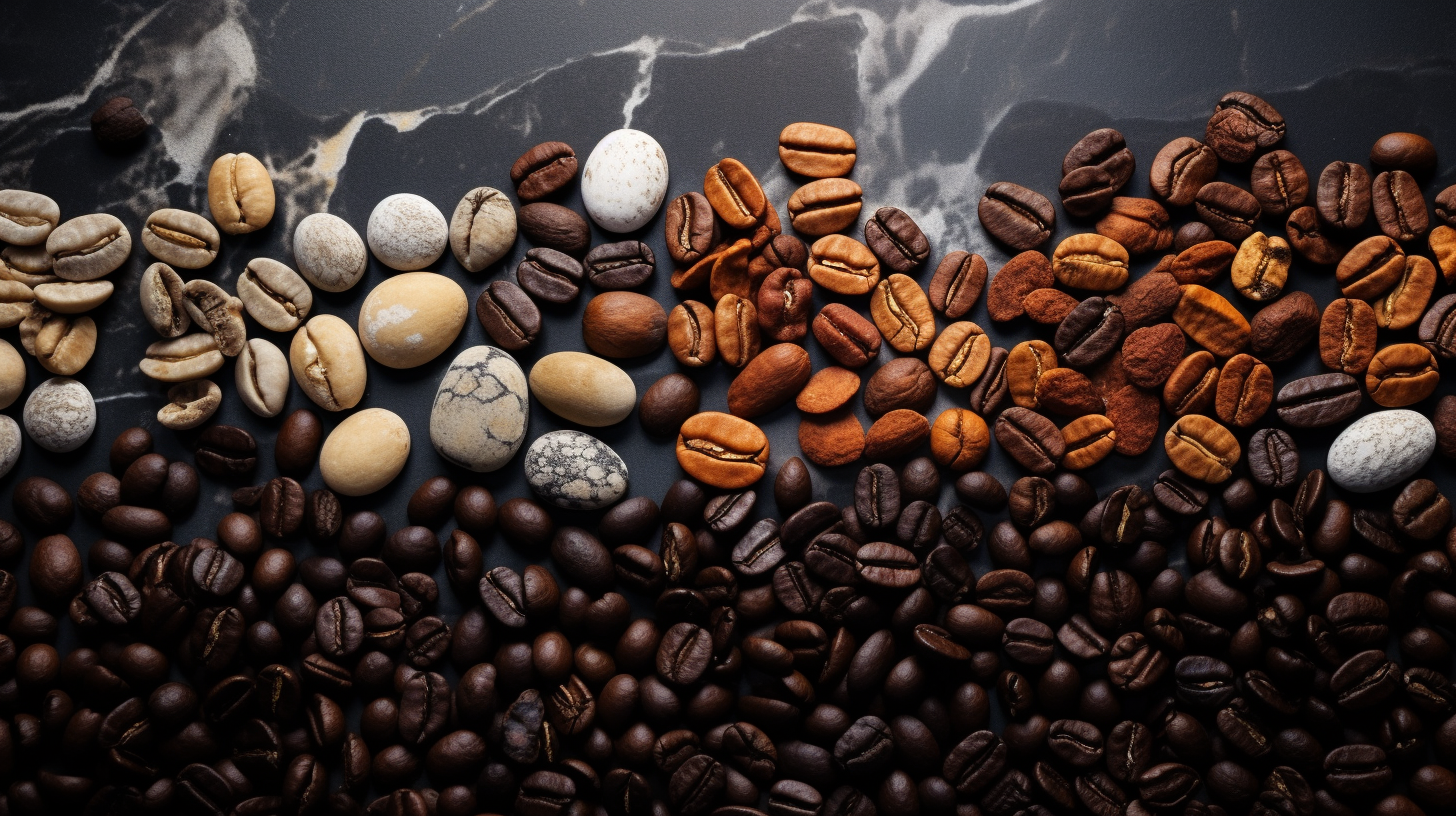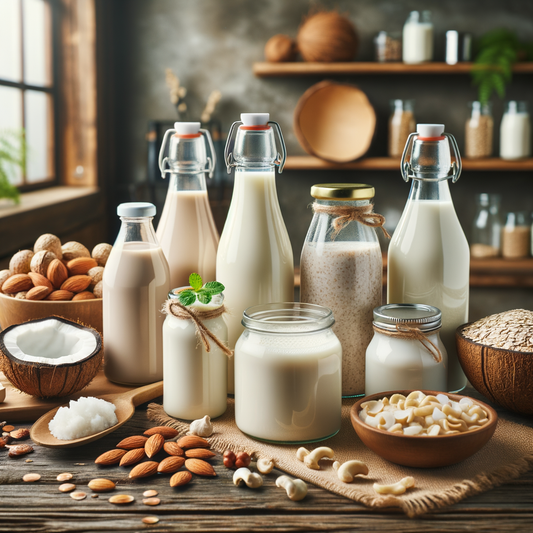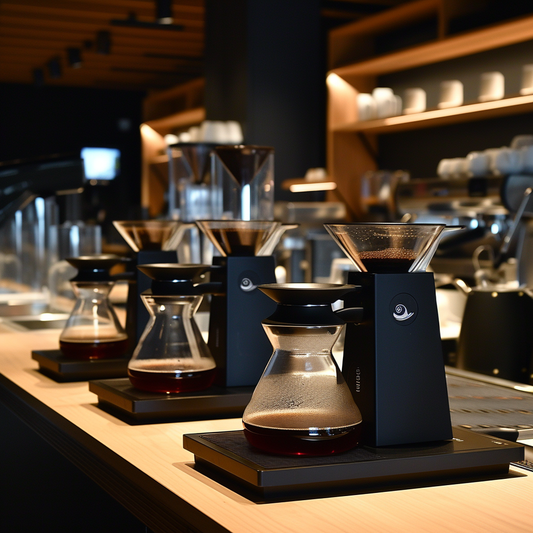As the third most consumed beverage on earth, coffee holds a special place in the heart for an estimated 30-40 percent of people. Whether it's the beckoning aroma, rich taste, or that essential jolt of caffeine to get your day in gear – coffee has irrevocably marked culture and the human experience.
But with an ever eager market trying to offer a piping cup of joe around every corner, sometimes the character of the beans and quality of the brew can be found a bit lacking. Not to mention, shelling out for high margin water at dominant chains like Starbucks can feel a bit sour at times for the purist.
Often, the best cup can be found right at home. With just little knowledge of coffeeology and a bit of practice, you could be an at home barista hero in no time. Read on to learn about some of the nuances of selecting the right bean for your palette and how you can extract the best possible flavor with a variety of brewing methods and techniques designed for the novice to the experienced. Devine java awaits!
What Makes the Best Coffee at Home?

With all of the nifty and convenient options available today, you’ve probably already experimented with a variety of at home brewing methods. Some of the most common today include drip coffee using a percolator, single brew pods, pour over, and the French press. Whatever your preferred method, there are a few simple factors that can really make or break the final result of your brew.
Selecting the Right Beans for Brewing Coffee
When considering the best way to brew coffee for taste, beans are of primary importance! Making sure your beans are ethically sourced and freshly roasted will unlock the most vibrant and complex flavor.
Picking the Right Roast Level
Also consider your desired roast level. Light, Medium, Dark, and Blond roasts will provide uniquely different flavors that can seriously vary your experience.
Choosing Your Water Quality
Finally, choose good water. The sediment and mineral contents of tap water can really alter the flavor profile of your brew and cause buildup in your coffee machine. Opt for filtered water when available!
What is the Best Method to Brew Coffee?
You could certainly spend a lot of money and time trying out different machines and processes for getting your perfect jolt in the morning but, we’re trying to take the guesswork out of it. Read below to learn about some of the most common brew methods and their pro’s and con’s – because the best method for brewing coffee is the one that gives you the most satisfaction, lifestyle balance and flavor!
Pour-Over

The pour over coffee method has seen a surge in popularity over the past decade with it representing the most aesthetic and sophisticated method to craft a cup. To brew using the pour over method, you’ll need a large carafe, with an hourglass shape. A paper or metal filter is placed at the bottom of the top funnel and then medium fine ground coffee is added.
Use a separate kettle to heat water just below boiling before slowly and consistently pouring over the grounds. Use a circular pouring motion to cover the grounds entirely.
Pro tip: using a kettle with a long thin spout – often called a gooseneck kettle – will give you much greater control over the process. Once you’ve finished pouring, remove the filter and serve into a mug of your choice. While this method is a bit time consuming, the connoisseur will appreciate the level of control and nuanced flavor that can be produced with just slight variations.
Recommended Coffee Bean: Ethiopia Natural
More Pour-Over Coffee Brewing Tips:
1. Grind Size: Medium-fine.
2. Water Temperature: Around 200°F (93°C).
3. Ratio: 1 to 2 tablespoons of coffee per 6 ounces of water.
4. Pouring Technique: Slowly and evenly pour water over the grounds in a circular motion.
5. Brew time: 2-4 minutes.
French Press

The French press has been a part of coffee culture since the late 1800’s and is one of the best ways to brew coffee at home. Featuring a notably unique and classic design. Preparation consists of combining coarse ground beans and boiling water in the main chamber of the vessel. The top is then fixed with the plunger extended. The desired strength of your final brew will be determined by the amount of time the beans are allowed to steep. The typical brew time is between 3-5 minutes. Once the beans are properly steeped, depress the plunger to push the beans to the bottom of the vessel and serve
This method is favored by those who are looking for an experience that is ritualistic and leaves room for trial and error. Experiment by allowing the beans to steep for different lengths of time, varying the type of bean or, altering the ratio of grounds to water.
Recommended Coffee Bean: French Roast
More French Press Coffee Brewing Tips:
1. Grind Size: Coarse.
2. Water Temperature: Around 200°F (93°C).
3. Ratio: 1 to 15 ratio of coffee to water.
4. Pouring Technique: Pour water over the grounds and let it steep for 4 minutes.
5. Plunge: Press the plunger down slowly to separate the grounds from the coffee.
Drip Coffee

The tried and true classic! This method involves the flow of hot water over top of fresh grounds contained in a filter. This method delivers a hands free brew and places a premium on convenience. Using this method is great if you are brewing for a large group of coffee drinkers and you want to maximize your efficiency. Additionally, the drip method’s simple brew process makes it a winner for those who experience a little brain haze in the morning - a solution for all who say, “I need coffee to make coffee”.
Recommended Coffee Bean: Guatemala
More Drip Coffee Brewing Tips:
1. Grind Size: Medium.
2. Water Temperature: Around 195-205°F (90-96°C).
3. Ratio: 1 to 2 tablespoons of coffee per 6 ounces of water.
4. Pouring Technique: Pour water over the grounds in a back-and-forth motion.
5. Brew Time: 5-6 minutes.
Moka Pot

The Moka Pot, often referred to as “stovetop espresso” is another great option if you are looking for the best ways to brew coffee at home. The brewing process is straightforward and consistent but still delivers bold flavor. The device uses two chambers to make the magic happen. The lower chamber is filled with cold water and then a metal filter basket with fine ground beans is secured within.
The vessel is placed directly on the stovetop and allowed to come to boil over medium heat. As the water begins to boil, the rising heat and pressure will push brewed coffee upward and into the upper container. Wait for the gurgling sounds of the brew process to slow and remove from heat before serving.
While many liken this process to espresso, the lack of a high pressure environment doesn’t produce exactly the same result. Nonetheless, the Moka Pot delivers a rich flavored – consistently high quality cup with minimal effort. Enjoy!
Recommended Coffee Bean: Nicaragua
More Moka Pot Coffee Brewing Tips:
1. Grind Size: Fine.
2. Water Temperature: Boiling water.
3. Ratio: 1 to 14 ratio of coffee to water.
4. Pouring Technique: Fill the bottom chamber with water and add the coffee to the filter. Assemble the pot and place it on the stove.
5. Brew Time: 5-6 minutes.
Siphon (Vacuum Pot)

Originally brought to market in the late 1800’s by a French woman by the name of Mme. Vassieux, the Siphon coffee vessel became quite a popular method of extraction. Known both for its beauty in design and the refined quality of the flavor it produces.
To prepare coffee using this method you’ll prepare the vessel with hot water on the bottom and turn on your heating element. Once the water begins to boil into the top chamber, add the desired amount of grounds and and stir for a few moments until thoroughly mixed. Brew until the desired strength is reached and then turn off the heat. As the coffee cools, it will transfer from the top vessel to the bottom – once the transfer is finished, serve and enjoy!
Recommended Coffee Bean: Mocha
More Siphon Coffee Brewing Tips:
1. Grind Size: Medium-fine.
2. Water Temperature: Around 195-205°F (90-96°C).
3. Ratio: 1 to 15 ratio of coffee to water.
4. Pouring Technique: Add water to the bottom chamber and heat it. Once heated, add the coffee to the top chamber and stir. Once the coffee has finished brewing, remove heat and let it cool.
5. Filtering: Use a filter to separate the coffee from the grounds.
Armenian Coffee (Known as Turkish Coffee or Greek Coffee)
For those who favor an intense and complex coffee tasting experience, Armenian coffee, called soorj, may be the choice for you. Much similar to other coffee brewing methods of the near and far East, this variation features a brewing vessel called a jazzve and specialty coffee beans which are unique for their fineness of grind and potency of flavor.
To prepare, measure out cold water with demi-tasse cups and add to the jezve. Then, add one heaping teaspoon of grounds for each cup of water. Place over your heating element and wait for the water to approach a boil. Be attentive to the brewing process. As the water and grounds begin to heat, the coffee will begin to froth and rise in the vessel. Once frothing occurs, remove from heat immediately and pour off small amounts into the serving cups. Repeat this process until both cups are filled with rich and frothy Armenian coffee.
More Armenian Coffee Brewing Tips:
1. Grind Size: Very fine.
2. Water Temperature: Boiling water.
3. Ratio: 1 to 1.5 ratio of coffee to water.
4. Pouring Technique: Add a demi-tasse cup of water to the jezve (pot) and bring it to a simmer. Optionally, include half a teaspoon of sugar in the pot. Then, incorporate one teaspoon of finely ground Armenian sooj into the water, stirring continuously over medium-low heat until it reaches a boiling point. Afterward, remove the pot from the heat and pour directly into cup.
5. Resting: Let the coffee rest for a few seconds before serving to allow the grounds to settle to the bottom.
15 Tips for the Best Way to Brew Coffee for Taste
If you're for the best taste, here are some additional coffee brewing tips to consider:
1. Start with High-Quality Coffee Beans
Always seek out beans that are freshly roasted, ethically sourced and packed in an airtight container. This is among the most important steps so, research appropriately before making a commitment!
2. Choose the Right Coffee Grind
Different brewing methods require different grind sizes for optimal extraction. Make sure you are within a good margin here for the best possible flavor, and to avoid over extraction.
3. Use the Right Water Temperature
Heating your water to the correct temperature range 195-205 degrees Fahrenheit will contribute to your best possible cup. The heat of the water greatly affects the rate of extraction and can easily leave you with a cup that is sub par. Use the right temperature to make sure you are getting a full bodied, rich flavor and avoid bitterness.
4. Use Filtered Water
Seek out filtered water whenever available to avoid the impurities and particulate concentrations often found in tap water which can greatly affect the resulting flavor of your brew as well as cause unwanted buildup in your brewing machine. .
5. Use the Right Amount of Coffee
A general rule of thumb is to use 1-2 tablespoons of grounds for each 6-8 oz cup of water you plan to brew. Try experimenting with this ratio to vary your brew strength.
6. Make Sure You Brew with the Right Equipment
The quality of your equipment matters! Investing in a good grinder, coffee maker or gooseneck kettle can greatly increase the precision and quality of your finished brew.
7. Experiment with Different Brewing Methods
The joys of coffee can be found through experimentation! Try out different brewing methods to unlock a wide range of different flavor profiles and end products.
8. Take Your Time
Have patience and don’t rush the brewing process. Allowing the coffee to brew properly will result in the best possible extraction and end flavor.
9. Use a Scale to Measure Your Coffee and Water
If you are looking for precise and consistent results, consider using a scale to measure exact amounts of coffee and water.
10. Clean Your Equipment Regularly
Keep your brew equipment in good working order with regular cleanings. This helps prevent the buildup of oils and other sediment from the brew process – keeping the flavor and end results clean and consistent.
11. Store Your Beans Properly
Your beans are susceptible to the elements if not properly stored. To avoid rancidity and flavor variations, store your beans in an airtight container and out of direct sunlight..
12. Consider the Roast Level
Different roast levels have varying flavor profiles and caffeine contents. Experiment with them all to find combinations and notes that sing to your palette. .
13. Add Flavor to Your Coffee
Sometimes a little extra flavor kick can do just the trick. Add some mix-ins like cinnamon, or nutmeg to your mug for just a hint of something special.
14. Try Brewing with Cold Water
Starting with cold water can alter the temperature of extraction and change how quickly the oils and other flavors are pulled from the grounds – significantly impacting the resulting flavor.
15. Don't Be Afraid to Experiment
Most of all, don’t be afraid to experiment. Brewing coffee is an art and it takes time and careful consideration to find the best beans, brewing method and finishing touches to make it just the right cup for you!
Be Your Own Barista Today!
While you might feel a bit overwhelmed at first with the array of choices and nuances related to brewing coffee, a little time and bravery in experimentation could really help you awaken your inner barista. Taking the time to try new blends and single origins, Being open to trying different brew methods and freeing yourself up to make mistakes can help you enter an entirely new world of possibility and enjoyment. With practice, you’ll become a coffee brewing pro in no time!






